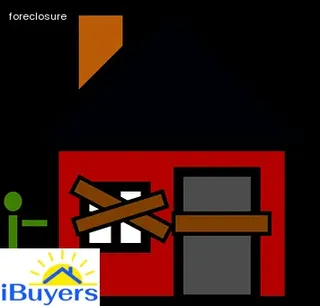Navigating the foreclosure process in Montana can be a daunting task. It's important to understand the preforeclosure process, which is the first step in a foreclosure proceeding.
Preforeclosure typically begins when a homeowner falls behind on their mortgage payments and the lender sends out a notice of default. This alerts homeowners that they are in danger of losing their home and gives them an opportunity to catch up on missed payments or negotiate a payment plan with their lender.
Foreclosures can also occur if homeowners fail to pay their taxes or obey local ordinances. Once a homeowner is delinquent, lenders may offer them a loan modification or other assistance programs that could help them avoid foreclosure.
If these measures are unsuccessful, then lenders can initiate the formal foreclosure process by filing suit in court and seeking permission from the court to auction off the property. Knowing what to expect during this process is critical for homeowners so they can make informed decisions about how best to protect their rights throughout the proceedings.

When a homeowner faces foreclosure in Montana, it is important to understand their rights. Homeowners have the right to receive notice before the start of the foreclosure process, which must be done through the court system.
Homeowners can challenge any errors or inaccuracies within the paperwork filed by lenders. They also have the right to negotiate with lenders and explore alternative options such as loan modifications, short sales, deeds in lieu of foreclosure and repayment plans.
Homeowners can request mediation if they are unable to reach an agreement with their lender and may be able to save their home from foreclosure. During the foreclosure process, homeowners should not ignore communication from their lender or court notices as this can result in additional charges and fees.
Finally, homeowners have the right to remain in their home until all legal proceedings are complete and eviction occurs.
Navigating the foreclosure process in Montana can be a difficult and complicated task to undertake without the proper information. It is important to understand both state and federal foreclosure laws in order to ensure compliance and have a successful outcome.
In Montana, foreclosures are mostly done through non-judicial proceedings, which means that a court does not oversee the entire process. Instead, the lender initiates foreclosure proceedings by filing an action with the county clerk’s office.
The borrower then has 30 days from when they receive notice of default or acceleration to cure the default or reinstate their loan agreement before any further legal action is taken by the lender. Additionally, if the mortgage was originated after July 1, 2015, then pre-foreclosure mediation services must be offered by lenders before initiating foreclosure proceedings.
Finally, it is important to note that there are both state and federal consumer protection laws in place such as those under The Federal Fair Debt Collection Practices Act (FDCPA) and The Servicemembers Civil Relief Act (SCRA). Adhering to these laws can help make sure you have a successful outcome during your foreclosure experience in Montana.

It is crucial to understand the foreclosure process in Montana and how to avoid it. Working with a qualified real estate agent can help.
They will be able to provide insight into the current market, potential solutions, and resources that may be available to homeowners facing foreclosure. Additionally, communicating with your lender is important as they may be willing to negotiate different payment plans or loan modifications that can help you stay in your home.
If this is not an option, negotiating a short sale with your lender could be beneficial as it allows the homeowner to sell the property for less than the balance owed on their mortgage. It can also have some advantages over a traditional foreclosure as it generally has less of an impact on credit scores and can allow the homeowner more control over the timeline of the process.
Lastly, considering filing for bankruptcy may be an option if all else fails. This should always be done after consulting with a legal professional in order to ensure that you are making the best decision for your individual situation.
When a homeowner in Montana fails to make mortgage payments, the lender is legally allowed to send them a breach letter. This document serves as formal notice that the borrower has defaulted on their loan and the lender will begin to take steps to repossess the property.
The letter will include information about what payments are past due, any late fees or interest accrued, and how much time remains before foreclosure proceedings can commence. It may also provide an opportunity for borrowers to negotiate with their lenders for repayment options or a way to satisfy the debt in full before foreclosure begins.
Homeowners should be aware that if they don’t respond within 30 days of receiving the breach letter, they will likely lose their chance at negotiating with their lender and could face severe consequences, including eviction from the property.

The foreclosure process in Montana begins after a homeowner has failed to make mortgage payments for at least 90 days. During this period, the lender is required to send the borrower an official notice of default - also known as a Notice of Delinquency or Demand Letter - that outlines the current financial situation and how much must be paid in order to bring the loan current.
The homeowner should respond immediately and work with the lender to avoid foreclosure. If no response is received, or if the delinquent payment is not made, then the lender may move forward with filing a complaint in court.
This officially starts the foreclosure process in Montana and allows lenders to begin collecting on what is owed through a public auction sale.
Understanding deficiency judgments under Montana law is an important part of navigating the foreclosure process in the state. A deficiency judgment occurs when a lender seeks to collect the remaining balance on a loan after a property has been foreclosed on and sold at auction.
In Montana, lenders are allowed to pursue deficiency judgments within six months of the sale of a foreclosed upon property, and they must file suit in order to do so. However, lenders cannot pursue a deficiency judgment if the borrower has filed for bankruptcy or if the borrower was not personally liable for the debt.
Additionally, lenders are only able to pursue deficiency judgments up to two years after filing suit in Montana courts. Foreclosure can be an intimidating process, but understanding how deficiency judgments work under Montana law can help protect borrowers from further financial hardship.

The process of navigating a foreclosure in Montana can be both confusing and stressful. It is important to recognize that seeking professional help is often the best way to stop foreclosure.
Many home owners are unaware of their rights and do not understand the legal process involved in halting foreclosure proceedings. A qualified real estate attorney or mortgage broker can provide invaluable advice with respect to state laws, regulations and filing deadlines, as well as provide guidance on how to negotiate with lenders in order to keep your home.
Additionally, they may be able to refer you to other organizations or agencies that offer assistance in the form of loan modifications or refinancing options. Ultimately, it's important to remember that getting professional help can drastically reduce the amount of stress associated with facing foreclosure and greatly improve your chances of keeping your home.
Missing mortgage payments can have serious consequences for homeowners in Montana. When a borrower falls behind on their payments, the lender has the right to start the foreclosure process.
This process can be lengthy and complicated and is designed to bring the loan current or recover some of the money owed on it. The lender will usually send multiple notices demanding payment before filing a legal action in court.
Once they've filed a suit, they may be able to collect other costs associated with the loan, such as late fees and attorney's fees, from the homeowner. If the home doesn't eventually sell at auction, it could end up being owned by the lender.
In addition to losing their home, homeowners who miss mortgage payments also risk damaging their credit score, making it difficult for them to obtain loans in future. Although this situation is far from ideal, there are steps borrowers can take to try and stop or postpone foreclosure proceedings if they're facing financial hardship.

Navigating the foreclosure process in Montana can be complicated and intimidating for individuals facing a foreclosure, but understanding the right to reinstate before a foreclosure sale is an important step to take. If a homeowner in Montana falls behind on mortgage payments, they may have the right to reinstate the loan prior to the foreclosure sale.
This means they bring their mortgage current by paying all past due payments, late fees, and any other costs associated with reinstating the loan. Homeowners should contact their lender directly and determine if they are eligible for a reinstatement.
It is important to note that lenders must accept full payment of all delinquent amounts in order for homeowners to reinstate their loan before the foreclosure sale, which means that partial payments are not allowed. Additionally, homeowners should also be aware of their state’s laws regarding how much time they may have for reinstatement before the foreclosure sale takes place.
In Montana, homeowners typically have up to 30 days from when their Notice of Default has been recorded with the county clerk and recorder's office, or from when their Notice of Sale has been recorded with the same office - whichever comes first - to reinstate their loan prior to the foreclosure sale. Being aware of these rights can help individuals make informed decisions about how best to proceed with navigating the Montana foreclosure process.
In Montana, the redemption period after a foreclosure sale is an essential part of the foreclosure process. This period allows homeowners to reclaim their property if they can reimburse the lender for all costs associated with the foreclosure sale including any additional interest and fees.
The duration of the redemption period depends on whether it's a judicial or non-judicial foreclosure. For non-judicial foreclosures, it is typically six months while judicial foreclosures have a one-year redemption period.
During this time, lenders must provide homeowners with notice of their right to redeem their property before it is sold at auction. Homeowners should take advantage of this time to evaluate the costs associated with bringing their loan current and decide if they are able to redeem their property.
There are other options available such as working out a payment plan, selling the home themselves or even filing for bankruptcy protection. Ultimately, navigating the Montana foreclosure process requires homeowners to be familiar with all of their rights and obligations during this difficult time in order to protect themselves from further financial hardship.

In Montana, the typical foreclosure process may take anywhere from ninety days to a year depending on the particular situation. It begins by filing a complaint in court and then serving the homeowner with a summons and complaint.
The homeowner is then given twenty days to answer or respond to the complaint. If no response is received, the court can enter a default judgment for the lender.
Following this, the lender will set a foreclosure sale date. Statute requires that at least twenty-one days must pass between when the notice of sale is provided and when the actual sale occurs.
Once this period has passed, lenders are able to proceed with selling off any real estate that was involved in the foreclosure process. It should be noted that although foreclosures generally take around six months in Montana, individual cases may vary significantly depending on their complexity and other legal factors.
When facing eviction following a foreclosure sale in Montana, it is important to understand your legal rights. The state’s Residential Landlord and Tenant Act has specific statutes that protect a tenant’s right to remain in the property until they have received proper notice to vacate, usually from the new owner or their representative.
The law also stipulates that the tenant must be given a reasonable amount of time to arrange alternative living arrangements and that the new owner must provide written notice of the date and time of eviction. Additionally, if the tenant has not vacated by then, the landlord may only remove them with help from a law enforcement officer.
Furthermore, if rent was paid up until the foreclosure sale, the former owner may be required to reimburse that money to the tenant as part of an equitable distribution of funds. It is essential for tenants in this situation to be aware of their rights and follow all applicable laws when navigating Montana's foreclosure process.

Navigating the preforeclosure process in Montana can be a daunting and confusing task, but as a homeowner, it is essential to understand your rights. It is important to ensure that all of the necessary steps are taken to protect yourself legally during this time.
In Montana, homeowners have certain legal protections which help keep their rights secure throughout the foreclosure process. For example, state law requires lenders to provide notice of the foreclosure proceedings and an opportunity for homeowners to dispute any claims made by the lender.
Additionally, the lender must provide a full accounting of any expenses related to the foreclosure before proceeding with any legal action. Finally, once a home has been foreclosed upon, homeowners in Montana may be eligible for some financial assistance with relocation costs or other expenses associated with losing their home.
Understanding these legal protections and taking advantage of them when applicable can help protect your rights as a homeowner during this difficult time.
Understanding the different types of foreclosures available in Montana is key to navigating the state's foreclosure process. When a home goes into foreclosure, it is important to calculate potential losses associated with a deficiency judgment from MT, as this can have major implications for a homeowner's credit score.
It is also beneficial to uncover any benefits and support offered by the state for those facing a foreclosure, as this could potentially help prevent or delay the process. Lastly, it should be noted that ignoring a breach letter can lead to serious risks such as legal action or eviction.
Understanding these factors and researching your options thoroughly can provide homeowners with an understanding of their rights and responsibilities during the foreclosure process in Montana.
In Montana, there are certain rules and regulations that must be followed in order to navigate the foreclosure process. Foreclosed properties are required to be posted for public sale in a newspaper of general circulation within the county where the property is located.
The notice of sale must include information such as the time, date, and location of the sale, as well as a description of the property being sold. Additionally, lenders are required to provide written notice to borrowers at least ten (10) days prior to filing any court action related to foreclosure.
In Montana, foreclosure sales must be conducted through a judicially supervised auction. The highest bidder at the auction is then provided with title to the property upon payment of their bid amount plus applicable fees and costs.
All foreclosures in Montana require a judicial determination that the debt is due before any sale can take place.

In Montana, the foreclosure process usually begins when a homeowner is three months behind on their mortgage payment. After that, lenders can start the legal process and require the homeowner to pay back all missed payments and court costs to avoid foreclosure.
If the homeowner does not make payments or respond to notices from their lender within 90 days of being three months delinquent, they will be served with a Notice of Default and Intent to Foreclose. This document explains that if the homeowner does not cure the delinquency within 30 days from the date of service, then the property will be subject to foreclosure.
Once issued, this notice will remain active for six months before going into foreclosure proceedings, giving homeowners time to work out an arrangement with their lender and prevent losing their home.
Montana has the longest foreclosure process in the United States. A Montana foreclosures timeline can take anywhere from two to three years, depending on the individual circumstances of each case.
This extended timeline for foreclosure is due to a number of factors, such as Montana's unique laws that govern how lenders and borrowers must proceed through the foreclosure process. In order to navigate this lengthy process, homebuyers should be aware of certain aspects of Montana real estate law.
For instance, Montana requires both judicial and non-judicial foreclosures depending on a variety of factors, including the type of loan taken out and the lender's preference. Additionally, all foreclosure notices must be posted in at least two public places and published in a newspaper for at least four weeks prior to any foreclosure sale taking place.
Finally, although all mortgages in Montana are subject to a six-month redemption period after a foreclosure sale has been completed, there are additional extensions available depending upon certain conditions set by state law. Navigating The Montana Foreclosure Process can be complex but understanding these elements will help homebuyers make informed decisions when considering buying property in this state.
Yes, Montana does have a right of redemption for foreclosures. According to Montana law, a homeowner who has had their property foreclosed upon has the right to redeem the home within six months of the foreclosure sale.
This means that if the homeowner pays off all past due payments and fees associated with the foreclosure within this six month period, they can reclaim their home. Homeowners should be aware that this process is not automatic and must be pursued through the courts in order for it to take effect.
In addition, homeowners should also understand that not all properties are eligible for redemption so it is important to seek professional advice from a real estate attorney or other legal professionals before attempting to redeem a property. Navigating the Montana foreclosure process can be complicated and intimidating but understanding your rights as a homeowner is key to reclaiming your home or avoiding foreclosure altogether.
A: The average length of time for a foreclosure process in Montana is typically between six to nine months, depending on the circumstances surrounding the case.
A: The foreclosure process in Montana usually takes between 6 and 8 months with the involvement of a Title Company.